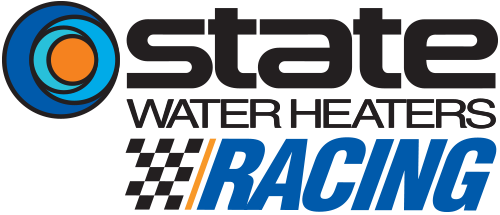 by Liz Allison, LizAllison.com
by Liz Allison, LizAllison.com
Safety has always been important to NASCAR. However, after Dale Earnhardt, Sr.’s fatal crash in the 2001 Daytona 500, safety burst to the forefront of NASCAR’s technology development.
A profound loss of a racing icon changed the way NASCAR viewed safety. This immeasurable change would save many lives in years to come.
In the early years of NASCAR racing, safety was certainly at a minimum. Drivers would often race in their street clothes with a soft helmet that barely covered their heads, leaving the driver vulnerable to what-if’s in a very dangerous sport.
There is no denying that with motorsports, tragedy often leads to change. While the death of (arguably) one of the greatest NASCAR drivers of all time changed the way NASCAR viewed safety, if we look back through the history of the sport, it has been an upward movement from the get-go.
NASCAR has dedicated an entire team at the R&D center in Charlotte to continue its safety development. These developments have made NASCAR as safe as one can expect from racing at speeds exceeding 200 mph.
Fire Retardant Uniforms and Safety Harnesses– Drivers wear several layers of fire-retardant clothing, including underwear and gloves made from Nomex. This material gives them the extra protection needed in the event of a fiery crash. In addition, drivers strap in to a nine-point harness. All the belts are connected to a single latch that can be released quickly to allow for a quick exit from the car.
Closed-Face Helmets– In years past, NASCAR did not dictate what type helmet a driver would wear while on the track. Drivers would normally use the type helmet they were accustomed to, be it open-face or full-face. In 2001, NASCAR made the closed-face helmet mandatory, creating more protection for the driver’s head.
HANS Device- NASCAR made the HANS device mandatory in 2001. If you want to race in NASCAR, you wear a HANS device. The purpose of the HANS device is to protect the head and neck in a crash. A major cause of death among drivers during races is through violent head movements, where the body remains in place (due to being strapped in) but the momentum keeps the head moving forward, which often leads to quick death.
Carbon Fiber Seats-The carbon fiber seats absorb more energy from an impact, unlike the aluminum seats that were used for years in NASCAR. Most seats now wrap to create a cocoon around the driver and a safer cockpit.
Roof Flaps– NASCAR introduced roof flaps to the car in 1994, designed to keep cars from getting airborne and flipping on the track. The roof flaps are recessed into the roof of the car and generally keep downforce on the cars as they spin.
Pit Road Speed– In 1990, Mike Rich, a rear tire changer for Bill Elliott, was killed in a pit road crash at Atlanta Motor Speedway. This pit road tragedy led NASCAR to implement pit road speed limits in April of 1991.The speed limit depends on the size of the track and the size of pit road. NASCAR uses an electronic scoring system to monitor the speeds of cars entering pit road. Heavy penalties are applied if drivers speed on pit road.
Restrictor Plates– NASCAR mandated restrictor plates at Talladega and Daytona in 1988. This was done in a effort to actually slow cars down at tracks of greater distances. The plate is a device installed at the intake of an engine to limit its power. While safety is the primary reason for the plates, it is also used to level competition, creating what many believe to be better racing.
Fuel Cells– Fuel tanks were used in NASCAR up until the mid-60’s, when it was found that tanks could rupture and leak in wrecks. NASCAR then switched to rubberized fuel cells to limit the potential for ignition and to keep from leaking, minimizing the chance for a fire upon crashing.
Safer Barriers (Soft Walls)- In 2002, safety barriers were introduced in NASCAR. The barrier walls absorb the energy of an impact better than concrete walls, creating a softer wall for impact. The wall system connects to existing walls and are quite expensive to install, costing tracks millions of dollars.
NASCAR Safety Team– As of 2017, a traveling safety team will have a presence at all Monster Energy Cup Series races. The traveling safety team consists of 4 emergency trauma physicians who rotate race to race. NASCAR will send a chase vehicle onto the track if a wreck occurs, with a team doctor and paramedic to give medical attention if needed.

